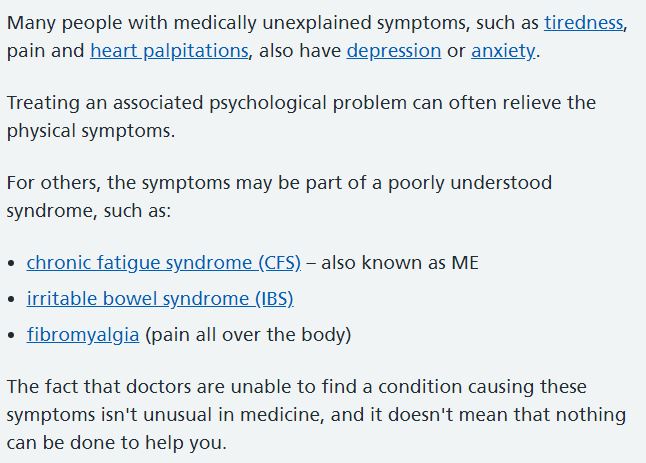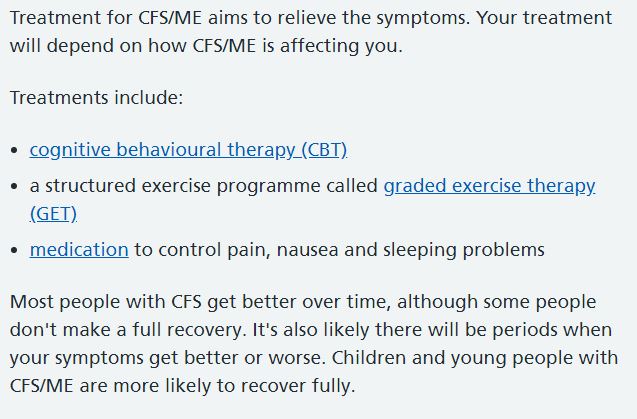I know you have enough to worry about already with the pandemic situation the way it is, but there is something else important that you should know. The sad truth is that if you get COVID – 19 and survive, it could just be the start of your problems.
Ever since we first heard of this new virus, those of us who have experienced ongoing life-altering symptoms over many years following viral infection have feared that it would leave a great many more people in a similar condition to ourselves. It gives me no satisfaction whatsoever to report that this appears to be the way things are heading.
This thread from Reddit contains a distressing discussion between a great many previously fit and healthy young people who have all been left in a similar situation by COVID – 19, experiencing not the mild illness they were led to expect but a much more severe set of symptoms which, even after eight weeks or so, don’t seem to be going away.
As if this was not disturbing enough, they often find themselves treated with scepticism by doctors, who refuse to investigate their ongoing physical symptoms, referring them instead for talking therapies such as CBT (cognitive behavioural therapy) which are more usually associated with mental health problems. Employers, friends, and even family can often be equally disbelieving. “My mother has basically disowned me,“ reports one young man of 33. These people are finding themselves in a living nightmare and cannot understand the lack of concern.
“Why is the media focusing on mortality figures for the old and infirm when it should be educating on the potential long-term health risks to all ages?” asks Golden_Pothos, who starts off the thread.
Well, since I started writing this post, several mainly well-informed articles about the potential long-term effects of COVID – 19 have appeared and let’s hope more will follow, but the broader answer is that the media have conspired for some time with successive governments in downplaying the potential severity of chronic illness, the existence of which appears to be regarded not so much as a human tragedy but an expensive inconvenience. The government’s official terminology is carefully chosen to reflect this perspective. So we find that people aren’t paid ‘incapacity benefit’ any more but ‘employment support allowance’. The implication of the name is that if an illness doesn’t kill you, you will make a full recovery. All you need is support until you are well enough to return to full employment. This is the climate in which it is okay for people with undeniably progressive conditions such as Motor Neurone Disease to be sent for benefit assessments in case they have got better.
Unfortunately this perspective from the politicians is supported by the decades old beliefs of the medical profession itself, which over a great many years has tended to treat any new and novel condition not with curiosity but with scepticism. Epilepsy, motor neurone disease, multiple sclerosis, Parkinsons Disease, even stomach ulcers have been dismissed as ‘somatised’ conditions invented by the mind rather than real physical dysfunctions deserving investigation. In every case, as medical knowledge has progressed, these conditions have eventually been revealed as the physical problems they always were, but this hasn’t stopped the next new illness to come along being trivialised and dismissed in exactly the same way, the doctors seemingly unable to tolerate a situation in which real physical conditions exist which they don’t understand.
In 1955, following an infectious outbreak affecting 292 members of staff at the Royal Free Hospital in London, many of those affected experienced symptoms which waxed and waned over a long period and the term myalgic encephalomyelitis (or M.E. for short) was coined to describe the condition. To start with, it was acknowledged as a neurological condition affecting multiple bodily systems but a few years later, in 1970, two psychiatrists McEvedy and Beard, took a new look at the case and, without interviewing or examining any of the patients involved, reached the new conclusion that it had all been a case of “epidemic hysteria”, one of the principal arguments for which they cited as “the high attack rate in females compared to males”. So it was that M.E. joined the long list of conditions mentioned above, dismissed as “medically unexplained” because it was yet to be fully understood by medical science.
Skip ahead to 1984 and a similar realignment in perspective was performed in the USA following an outbreak at Incline Village, where the term M.E. was discarded in favour of CFS or ‘chronic fatigue syndrome’. This was a name apparently intended to trivialise the condition, for ‘fatigue‘ in no way comes close to describing the extreme exhaustion and multifarious other symptoms which those with M.E. report. The name change certainly spread confusion, with some believing the two conditions to be one and the same and others to be two separate entities. To make matters worse, CFS is widely confused with the term “chronic fatigue”, which is actually just a symptom present in many different conditions rather than the name of any specific one. Add to this a baffling number of different diagnostic criteria, some more usually interpreted as M.E. and others as CFS, with certain researchers apparently happy to come up with more variations from time to time just for the sake of it, and you find yourself with a very confused picture. It is hard to work out exactly how all these complications have come about. It is almost as though the powers that be were trying to deliberately muddy the waters to impede progress – but surely that not could not be the case?!
In the years since CFS was ‘invented’, a small group of British psychiatrists has made it very much their own, promoting the use of GET (graded exercise therapy) and CBT to treat it. They argue that patients are kept ill not by any ongoing disease process but by ‘abnormal illness beliefs’ and deconditioning due to inactivity. All they need is a course of graded exercise, with associated CBT to encourage it, and they will be up and about again.
Patients strongly reject this theory, many having submitted in good faith to just such a programme of graded exercise only to find that it brought about a long term and sometimes even permanent deterioration in their condition. Patients were therefore astounded when a large scale trial in 2011 claimed to prove that graded exercise and CBT were effective treatments for the condition.
PACE was a £5 million government Trial (funded in part – uniquely for a clinical trial – by the Department of and Work and Pensions). It is the most expensive piece of research into CFS/ME ever conducted and was intended to provide a definitive answer to the question of how the condition should be managed. At first, it seemed to have done exactly that but when first patients and then other scientists and health professionals looked more closely, the trial was found to have a great many flaws.
Just to state a few of them briefly:
- The researchers made changes to their assessment criteria such that patients could be sick enough to enter the trial and then get worse yet still be classed as ‘recovered’ at the end of it.
- The unblinded trial relied on subjective assessments of success, with objective assessments included in the original protocol (such as returning to work) being dismissed by the researchers as irrelevant or unreliable.
- During the trial, participants received a newsletter extolling the virtues and success of the very therapies they were supposed to be assessing.
- The researchers’ conflicts of interest were not divulged to participants when they entered the trial.
- One of the criteria used for patient inclusion in the study was the Oxford definition, since dismissed in the US National Institutes of Health report into M.E. as harmful and in need of retirement.
This is by no means an exhaustive list of flaws but it gives you a flavour of the quality of the trial, which is now being taught in some US colleges as a text book example of how not to do science. Following the disclosure of these various issues, a number of letters have been sent to the editor of The Lancet (where the trial’s first paper was published), asking for an independent reanalysis of the study. The most recent of these was signed by over 150 health professionals, scientists, members of parliament, and patient organisations worldwide. In spite of the great weight of evidence in support of such reanalysis, no direct response to these letters has been received.
It seems astonishing that the PACE study is so flawed and has clearly been shown to be flawed but the editor of the supposedly distinguished journal which published it seems to feel no need to respond its critics. Similarly the PACE researchers themselves continue to act as though nothing has changed, still insisting that the PACE study is fine and they have done nothing wrong. How can this be explained?
It seems to be partly due to the power of the establishment here in the UK. The PACE researchers and their colleagues are highly regarded individuals. They are believed to be right by those in authority simply because of who they are. That they should finesse the figures the way they appear to have done is considered unthinkable, so their friends in power refuse to believe it is true. They certainly wouldn’t stoop so low as to look at the facts involved. We may think we have evidence-based medicine in this country but what we really have is eminence-based medicine, the fundamental principle of which is that eminent doctors cannot be wrong. It will take rather more than the truth to bring them down.
And then there is the all-important matter of economics. It is much cheaper to send patients for six week courses of CBT than it is to accept that we have on our hands a poorly understood organic illness requiring proper investigation, research and ultimately treatment. From the perspective of those in power, the country could not afford for PACE to be wrong, any more than we could afford for COVID – 19 to be a genuine threat, which is why our government pretended it wasn’t until the sheer weight of deaths forced them to change their minds. Deaths cannot be ignored but sadly chronic illness can, and it all too often is .
In recent years however, at least outside Britain, some advances have finally been made in the battle to address the true nature of M.E. The US Pathways to Prevention and Institute of Medicine reports, while not helpful in every respect, have recognised both the potential severity of the condition and the fact that it is not psychiatric – or psychological – in origin. The funds for research that were promised have been slow to follow but perhaps they will come in time.
Even in Britain, the NICE guidelines for the treatment of M.E. are being reassessed and there is a chance, albeit a slender one, that the recommendation of graded exercise will be withdrawn, just as it has in the US. If this happens, however, its proponents will not be in too much despair. They have long since had other plans in mind.
As long ago as 1997, they were were writing: “we regard chronic fatigue syndrome as important… because it provides an example for the positive management of medically unexplained illness in general.”
You can understand the appeal for them of unleashing their ‘expertise’ on this broader pool of patients. While only a relatively small proportion of people in the country have ME/CFS, a much larger number purportedly suffer with MUS. A key 2001 study by Nimnuan, Wessely, and Hotopf concluded that no less than 52% of patients who were newly referred to secondary care outpatient clinics had medically unexplained symptoms. Moreover, it has been quoted that people of working age with medically unexplained symptoms consume 10% of all NHS expenditure. Clearly if these figures are correct (which they almost certainly aren’t, but more about that later) the scope of MUS greatly exceeds that of the mere 0.25 million people in the country who are thought to suffer with M.E.
It will not be surprising then that new services for MUS are being rolled out to address this supposed need. The Guidelines for Commissioners of Services for Patients with MUS (2017) propose the instigation of MUS services in both hospitals and the community to manage patients with MUS, directing them away from costly referrals, medical investigations and interventions with long hospital stays, and instead giving them lower cost mental health treatments like CBT.
It might be argued that this will cause genuine physical illnesses to be overlooked by doctors, many of whom have already been persuaded that 50% of their patients aren’t really ill and are therefore preoccupied in trying to identify which ones they are, and it might be reasonably supposed that some patients will die as a result, but never mind: the end result will undoubtedly be less expensive.
Neurology attracts special attention in the new crusade against MUS, having been identified as having one of the highest proportions (at 62%) of patients with MUS in the study by Nimnuan, Wessely, and Hotopf. Patients attending with neurological symptoms which do not accord with any recognised pathology are therefore extremely likely to be diagnosed with FND, short for ’functional neurological disorder’ and very much the diagnosis du jour. They will then be referred to one of the new FND clinics that have opened across the country, where they will undergo CBT and also most likely be investigated for deep-seated underlying trauma, a therapy which patients with M.E. have mainly been spared but which is currently gaining in popularity. These patients, who like those with M.E., may well have been waiting some years for a diagnosis, will be reassured that their illness is being taken seriously at last – after all, the word ‘functional’ makes it sound like it is real, does it not? But in fact, the opposite is the case. The corridors of social media currently ring with frantic arguments between patients who believe that FND is a ‘proper diagnosis’ and those who know that it isn’t.
Divide and rule.
The MUS offensive is being pursued on many different fronts, including that of IAPT (Improving Access to Psychological Therapies), the programme originally intended to ensure that patients received therapies for mental health problems such as anxiety and depression which all too often had gone untreated. Its extension to cover long-term conditions and MUS has raised concerns, however, and an audit by Michael J Scott has suggested that the therapies used (principally CBT) come nowhere near achieving the 50% curative rate which has been claimed for them.
As essentially the same group of researchers is involved, it is perhaps not surprising that the work on MUS appears to be full of similar flaws to those which beset the PACE Trial. Take the Nimnuan, Wessely, and Hotopf study mentioned earlier. In a previous article on this blog, I made some suggestions about why the numbers of patients with MUS might well have been over-estimated (please scroll down to the paragraph beginning “Is all this really true?” ) and a recent article by a patient argues that account has not been taken of the substantial amounts of misdiagnosis which were involved.
Meanwhile, David Tuller, the US public health lecturer who has done so much to publicise the shortcomings of the PACE Trial, has been looking at a study of CBT for IBS (irritable bowel syndrome) this having been identified as a form of MUS. Tuller points out that the IBS Symptom Severity Scale used to assess the effects of CBT compared to ‘treatment as usual’ in the study required a difference of 50 points or more to be considered clinically significant. In fact, only one of the two types of CBT which were tested in the study achieved symptom improvement in excess of 50 in the 12 months follow up, and neither exceeded 50 in the long term assessment after 24 months. In spite of these results, the use of CBT for IBS has been heralded as a great success.
Tuller has also highlighted a gross and continually perpetuated error concerning the overall impact of MUS. A 2010 study by Bermingham et al concluded that MUS accounted for around 10% of NHS expenditure on people of working age. However, Professor Chew- Graham, one of the leading proponents of psychological therapies for MUS, quoted this a little differently, stating that people of working age with MUS accounted for 10% of total NHS expenditure. Unfortunately, this misreading has since been repeated many times over by Professor Chew-Graham and others such that the impact of MUS on the NHS budget has been grossly exaggerated in influential places over a long period of time.
In a recent Skype talk to the Sheffield ME Group, Tuller recounted his attempts to get some of these mistakes corrected and the editors’ lack of urgency or concern to get them changed. It is as if the facts don’t matter to them, as if they are only going through the motions of proving their case. You can understand how they might start to develop that mindset. It does indeed seem that those in power are so desperate for easy, cheap answers to difficult questions that they will soak up any old nonsense as long as the price tag is right.
It is too early to say how many of those with post-viral symptoms from COVID-19 will go on to develop M.E, but in a climate like this, is there any hope that they will be taken seriously if they do? Is it not much more likely that they too will be trivialised and fobbed off with CBT, that they too will be pushed into graded exercise, only to find that it makes their condition worse? In the aftermath of the pandemic, there will be too many other concerns to address, and less money to spare than ever. It seems too much to hope that those in power will come to their senses and take a proper, responsible look at the claims of the snake oil salesmen who are taking them for a ride, meanwhile condemning so many people with overlooked physical illness to lives of relentless ill health.
Notes:
1) It is frequently claimed that people with M.E. do not want to be given a mental health diagnosis because of the stigma involved. In actual fact, they simply do not want to be given an inappropriate diagnosis. There is widespread evidence of ongoing organic pathology in M.E. but none to support the deconditioning theory of the graded exercise proponents.
2) In particular, research has shown that people with M.E. have an abnormal response to exercise, producing excess lactic acid and, in a cardiopulmonary exercise test, uniquely performing less well on the second day of exercise.
3) You can find a summary of what biomedical research tells us about M.E. here.
4) ‘Medically Unexplained Symptoms’ are not necessarily unexplainable. They simply have not been explained by our current state of medical knowledge and testing ability. To assume they are therefore a mental health issue is simply that, an assumption. There is no evidence to support it.
5) I do not mean to imply that there is anything wrong with CBT therapy per se. I am sure it can be an effective treatment for mental health problems. There is no evidence, however, that it is a universal panacea, which is how it is currently being touted.






